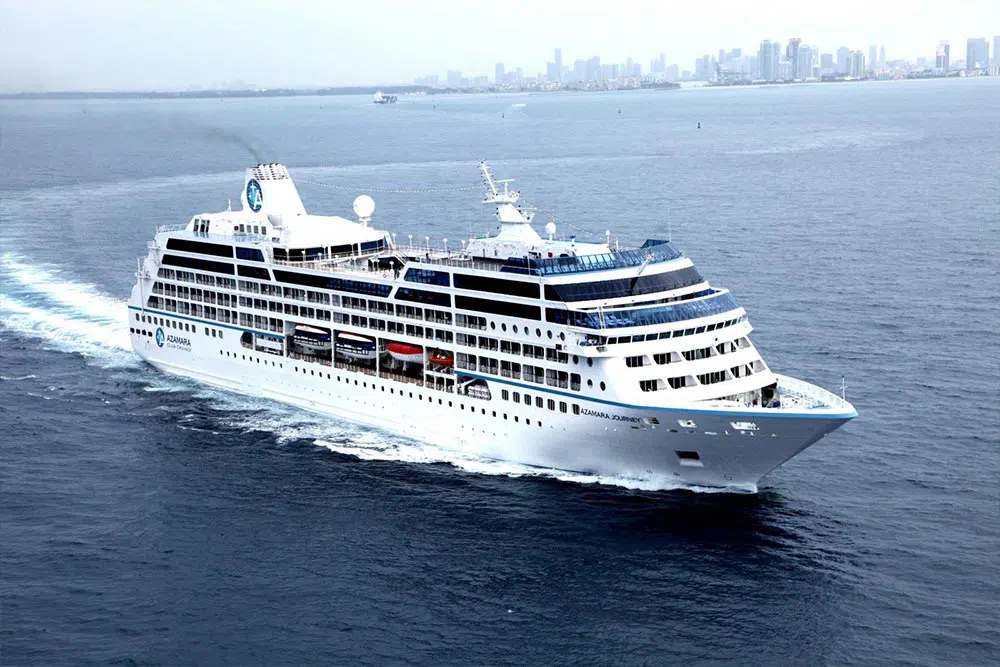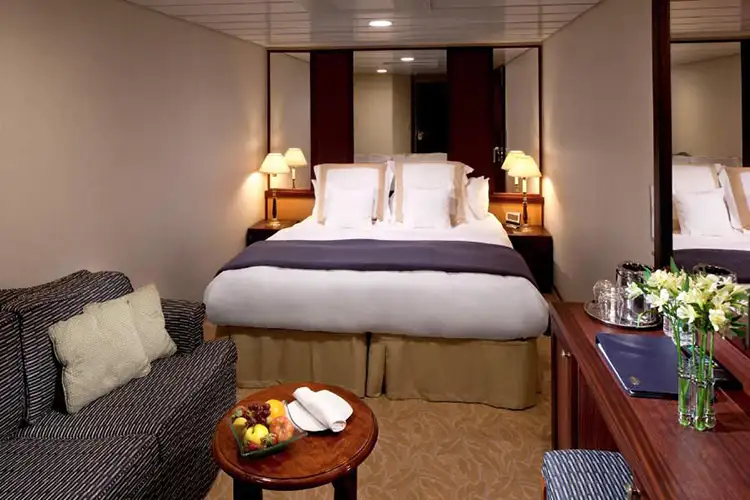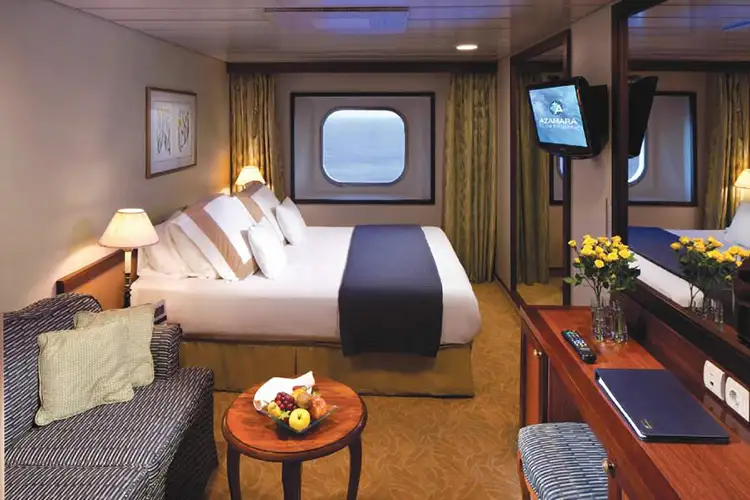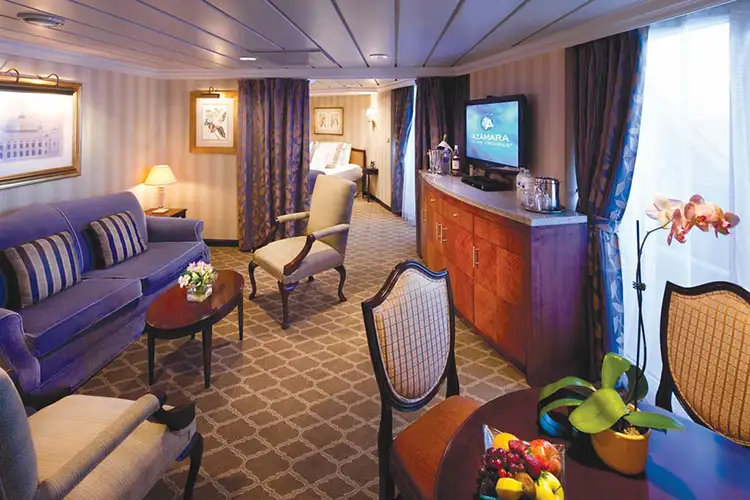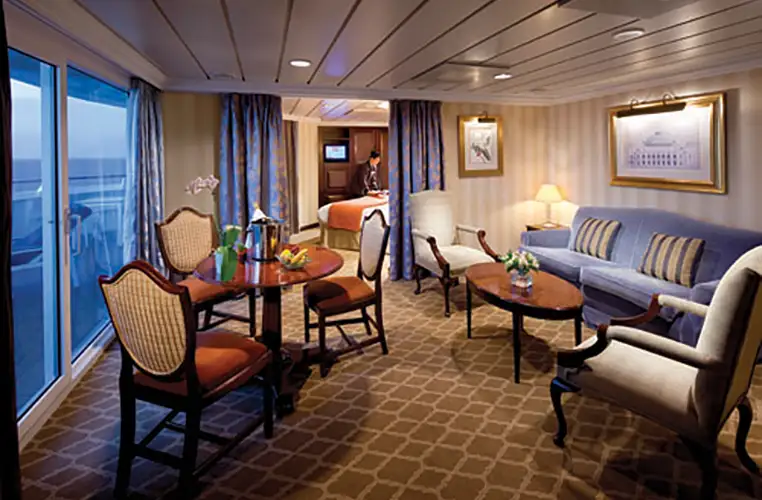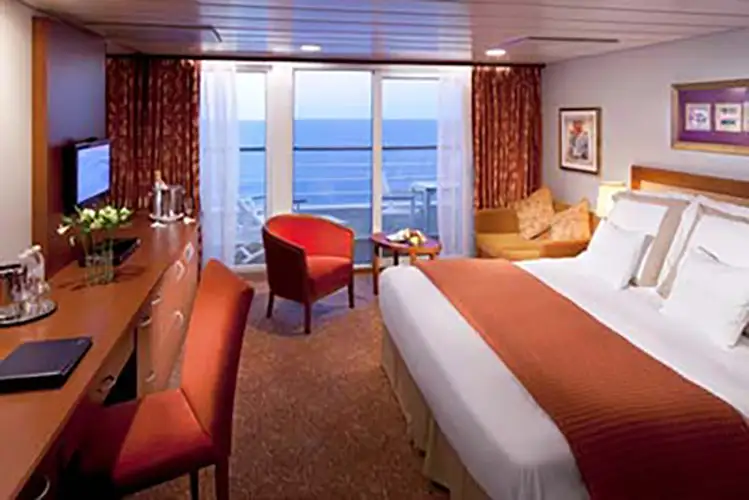Azamara Greek islands: 10 nights from Venice with Azamara Journey
Oct 20, 2025
Italy, Slovenia, Croatia, Montenegro, Greece
Cruise itinerary
Departure Port: Venice ➞
Landing: Athens
-
Monday, October 20, 2025 - 6:00 PMVenice
-
Tuesday, October 21, 2025 8:00 AM - 6:00 PMPirano
-
Wednesday, October 22, 2025 8:00 AM - 5:00 PMZadar
-
Thursday, October 23, 2025 8:00 AM - 10:00 PMDubrovnik
-
Friday, October 24, 2025 9:30 AM - 5:00 PMKotor
-
Saturday, October 25, 2025 10:00 AM - 10:00 PMKorfu
-
Sunday, October 26, 2025 8:00 AM - 10:00 PMArgostoli
-
Monday, October 27, 2025Navigation
-
Tuesday, October 28, 2025 8:00 AM - 8:00 PMHeraklion
-
Wednesday, October 29, 2025 8:00 AM - 6:00 PMSantorini
-
Thursday, October 30, 2025 5:00 AMAthens
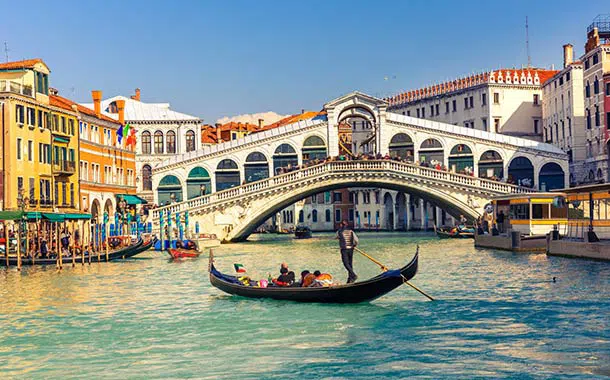
Venice
Setting sail from Venice on a cruise ship is unique and unforgettable. Discover all the cruises that depart from Venice for a great start to your holiday!
Venice it is one of the golden destinations of our age. A unique city of 120 islands, with an ancient history and endless waterways, it attracts a constant flow of tourists from all over the world to see its inspiring architecture and navigate its canals.
There are many souvenirs you can bring home from Venice, but the most lasting memory will be your impression of the city itself.
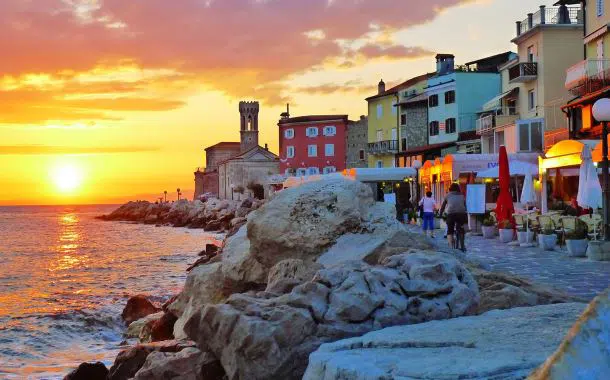
Pirano
Pirano or Piran of Istria (in Slovenian Piran, in Venetian Piràn) is a municipality of 17,882 inhabitants in southwestern Slovenia, on the Adriatic coast. It is a small Slovenian town with specific characteristics, and whose urban heritage is the best preserved in the entire region. The characteristic of this peninsula is known throughout the world. Up close, you can admire the typical architecture that reveals a strong Venetian influence, which is also found in other cities on the Slovenian coast. The city has preserved its medieval village: narrow streets, many squares and churches, all within walking distance from the sea. Tartini Square, located in the center, takes its name from the famous violinist and composer Giuseppe Tartini. His statue is in the central point of the square. Piran is surrounded by a circular wall that allows Piran to be a member of the European Circle of Cities with outer walls. Open-air exhibitions take place throughout the year in different locations involving illustrious men. The church of San Giorgio, patron saint of the city, built on a hill, has a splendid view of Piran and the surrounding area which extends to the Croatian and Italian coasts. The structures (hotels, hostels, guesthouses), cultural visits (churches, art galleries, museums, aquarium) make Piran an unforgettable place.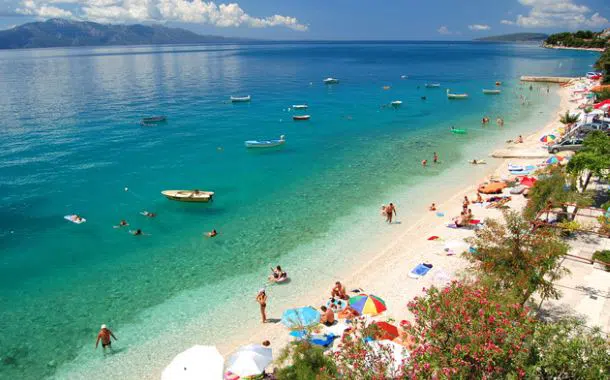
Zadar
Thanks to its geographical position, its beaches and attractive environment Zadar is an ideal destination for visiting the Dalmatia. Icing on the cake: the sunset would be the best in the world according to Alfred
Hitchcock.
Regional capital of northern Dalmatia, Zadar is a small coastal city in Croatia protected by lots of islands of the Kornati archipelago, one of the largest in the Mediterranean. If you want to enjoy your stay in this enchanting country, May, June and September are the most ideal times. A peaceful atmosphere is emanated from this ancient walled city. Surrounded by the sea and numerous pebble beaches, in the territory there are many national parks, in particular the most notably are the Plitvice Lakes, the Krka waterfalls and Velibit Mountain. Even after getting to know the city, you can admire the islands of the Kornati National Park, where you will find a labyrinth of untouched oases. This blessed place of the gods is ideal for diving and snorkling.
The surprising feature of Zadar: it is the only city in the world with a
marine 'organ', the waves produce a sound similar to the instrument used in the church. This is a further reason to discover this city rich in history and full of charm. This island has been inhabitaed for more that three decades, this is testifyed by its magnificent historical and archelogist ruins for example the 9th century monastery of San Donato, the 16th century Venetian bastions or the Porta della Terraferma, both Venetian. The central arch is decorated with a statue of St Chrysogonus, the patron saint of the city, these are just some of the places to visit. If you also plan to have fun, you will find several summer cultural events here, including Zara of Dreams or the musical nights of San Donato. For party-goers, we recommend one of the most famous clubs in Croatia, the Hacienda, which always hosts famous DJs and it is located between Zadar and Šibenik. While for liquors lovers, especially local ones, you can enjoy a typical local Maraschino in the evening.
The capital of Dalmatia, Zadar, is a small coastal city, located in Croatia and protected by numerous islands of the Kornati archipelago, one of the largest in the Mediterranean. If you want to enjoy your stay in this enchanting country, May, June, and September are the most ideal period. In this ancient walled city emanates a peaceful atmosphere. Surrounded by the sea and numerous pebble beaches, the territory has various national parks, in particular, the Plitvice Lakes, the Krka waterfalls, or the Velibit mountain. Even after knowing the city, you can contemplate the islands of the Kornati National Park, where you will find a labyrinth of pristine oases. This place blessed by the gods is ideal for diving and snorkeling. The striking feature of Zadar: it is the only city in the world with a "sea organ", the waves produce a sound similar to that of the instrument used in the church. One more reason to discover this coastal city rich in history and full of charm. This region has been inhabited for more than three millennia, as evidenced by the magnificent historical and archaeological finds. The monastery of San Donato of the 9th century, the Venetian bastions of the 16th century or the Porta della Terraferma, also Venetian. The central arch is decorated with a statue of San Crisogono, patron saint of the city, these are just some of the places to visit. If you also plan to have fun, here you will find several summer cultural events including Zadar of Dreams or the musical nights of San Donato. For partygoers, we recommend one of the most famous clubs in Croatia, Hacienda which always hosts well-known DJs, is located between Zadar and Sibenik. While for lovers of liqueurs, especially the local ones, in the evening you can enjoy a Maraschino typical of the area.
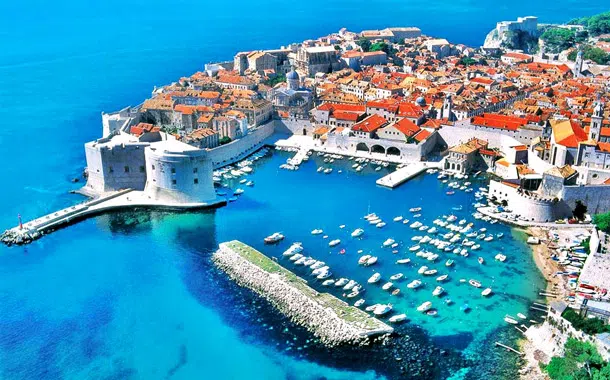
Dubrovnik
Dubrovnik is definitely special. A magnificent curtain wall surrounds marble streets and Baroque buildings exude a pearly light in the Adriatic sun.
Picturesque and artistic, Dubrovnik is a tourist hotspot and port in southern Dalmatia, at the foot of the Srđ mountain. From a historical and cultural point of view, it has been included in the list of UNESCO World Heritage Sites.
Thanks to its beauty and everything it has on offer for tourists, Dubrovnik is one of the most attractive destinations in the Mediterranean, so much so that the city can be visited all year round. In addition to its world-famous architectural heritage, this place has beautiful rocky beaches, pebble beaches and sandy beaches, enjoys a Mediterranean climate and also has lush vegetation. The main pedestrian street, Placa, is a melange of cafes and shops with monuments at each end.
Churches, monasteries and museums adorned with finely carved stone, recall an eventful history and a rich artistic tradition. Beyond the city there is a paradise of beaches, wooded peninsulas and a crystal-clear sea dotted with lush islands.
The city is also known for its delicious cuisine and its infrastructure of hotels for tourists. The city offers a wide selection of first-class restaurants, numerous sport and leisure activities, as well as cultural and entertainment events
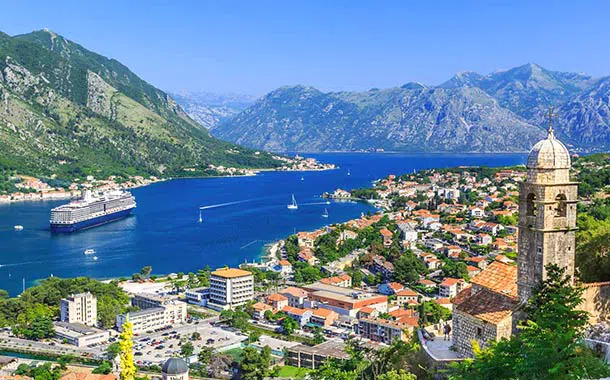
Kotor
The Adriatic Sea penetrates the jagged coast of Montenegro and winds between high mountains until it meets the exquisite and walled medieval city of Kotor.
Along the Adriatic coast of the former Yugoslavia, we find one of the most unique and fascinating European coastal areas, the city hidden in Montenegro, Kotor.
Located at the bottom of a bay, the beautiful medieval city of Kotor is considered a Mediterranean location surrounded by cliffs and an interesting historic wall. The tourist attractions of Kotor are easily reached with a pleasant walk. This small walled city, declared a UNESCO World Heritage Site, has compact dimensions that make it comfortable and easy to visit.
The central part of Kotor was built between the XII and XIV centuries. A historic center surrounded by a rather thick wall, four and a half kilometers long and fifteen meters high. This immense fortified wall reaches the bastion of Sveti Ivan (San Giovanni).
Inside the walls, it preserves an urban network cut into the stone. Its most emblematic work is the Cathedral of San Trifone, built in the 12th century. Inside the church it contains objects and frescoes sculpted during the 14th century. Furthermore, The Orthodox Church of San Nicolas, built between 1902 and 1909 in neo-Byzantine style and that of San Luca (13th century) built in Romanesque and Byzantine style.
Together with the churches, the city includes many palaces that tell its history: the Maritime Museum, located in the Grgurina Palace, a splendid baroque building located in the historic center of the country. The Drago house, with its beautiful Gothic windows, the Prima building, where Renaissance and Baroque lines are combined, the Ducal Palace and the Bizanti, both from the 17th century and the Napoleonic theater in the 19th century.
In Kotor, it is very common to see locals located along the rocky coast in the lower part of the city. In the old part of the area you will find many shops and restaurants that will delight your eyes. This location is the classic ideal city to spend quiet days or for a romantic getaway.
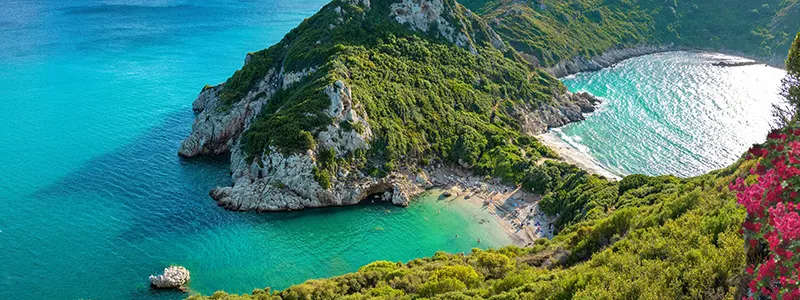
Korfu
Corfù is a Greek island in the Ionian Sea, located off the northwestern coast of Greece and south of Albania. The Greek island is a natural paradise. It is the second largest island of Greece, with 220 km of coastline. Its geography is dominated by mountain ranges and reaching 1000 meters above sea level, you will find Mont Pantokrator.
This mountain divides the island into three different areas. The northern area, abundant in olive groves, features green valleys and coastlines that form both small and large bays. The central part, the most populous and important, is covered by dense vegetation and lush hills.
The southern area consists of a large plain with less vegetation than the other regions but is decidedly more fertile. The most lively part of the city is found at Liston, similar to Paris’ Rue de Rivoli- a grand avenue lined with beautiful cafes and excellent restaurants. On the other hand, the island also has beautiful beaches washed by the Ionian Sea.
One of the most beautiful walks in the capital is along the harbor promenade, next to the city walls, where you can contemplate the view of the city. Corfù was the first Greek Island to open its doors to tourism, becoming an important international tourist centre that attracts many visitors every year. Even if tourism is evident in the coastal areas, the island has managed to preserve its authenticity.
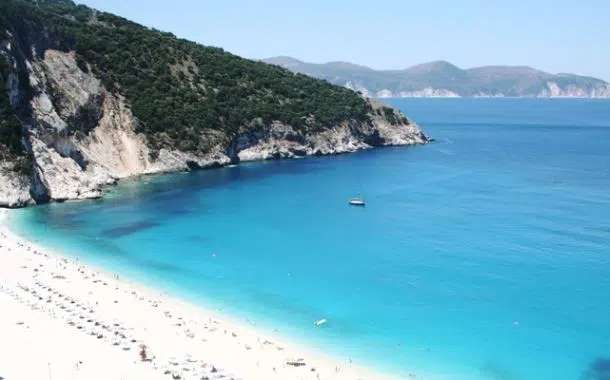
Argostoli
Argostoli is the capital and main port of the Greek island of Kefalonia. It is located 100 km west of Patras and has a population of about 13,000 inhabitants. The island is part of the archipelago of the Ionian Islands or Eptaneso.
This small city has been the capital of the island from 1757 to today and is located in the center of the southern part of the territory, surrounded by mountains and green forests.
Argostoli has monuments of great historical interest, such as the Archaeological Museum, which preserves archaeological finds from the Mycenaean to the Hellenistic and Roman periods. The Korgialenios Museum, a historical and ethnographic museum of the island, which contains a detailed reconstruction of the uses, customs and traditions of the place. The lighthouse of San Teodoro, located a couple of kilometers from Argostoli, built by the English under the command of Governor Napier and consisting of a small circular building with white Doric columns.
From the walk in Lithostrotos avenue, the most commercial street in the capital, you will find the beautiful Orthodox Church of San Spiridione and the interesting clock tower and its splendid bell.
The stone bridge, composed of 650 meters in length and called Drapano Bridge, is located at the entrance to the capital flanked by a small pyramid in the center and dedicated to Charles de Bosset, builder of the bridge.
The modern and cosmopolitan city of Argostoli is constantly moving with interesting activities to offer. It has an elegant maritime promenade lined with palm trees and beautifully paved with colored stones.
The road ends at the small ferry pier where boats leave for the city of Lixouri and where small fishing boats dock.
The central square of the city, called "Plateia Valianou", is a large site full of numerous restaurants, clubs and bars. During the summer evenings, the square becomes really crowded.
In Argostoli you will find a place of extraordinary beauty with splendid mountains and wonderful beaches.
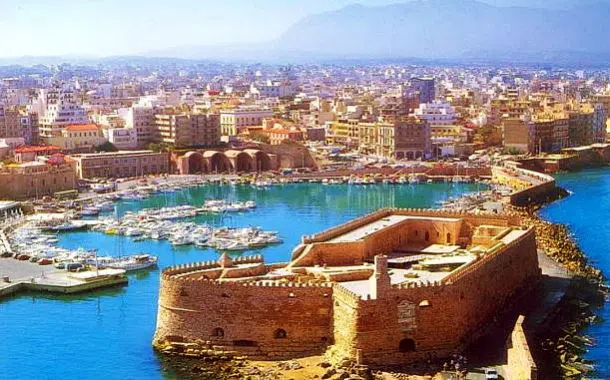
Heraklion
Heraklion is the capital of Cray. It is the largest port and economic center of the island and the third largest city in Greece. This city hosts the archbishop of the Greek Orthodox Church and has religious buildings of great interest.
Heraklion is located in the center of the northern coast of the Greek Islands. With more than 100,00 inhabitants, the city is the capital of Crete, a Venetian fortress during the Middle Ages. The ancient city, with its squares and wide cobbled streets, balconies with wonderful view on the sea, mantains numerous fortifications. In particular there are important and magnificent monuments such as the Church of Agia Ekaterini, dated back to 1555, where the Museum of Sacred Art is hosted. The Archaeological Museum, home to ceramic sculptures, jewellery and frescoes on the Minoan culture. The Historical Museum, home to the only exhibited work of the painter Domenico Theotokopoulos (The Greek), and where you can have a view of Mount Sinai. The Cathedral of St Mena, the patron saint of the city, built between 1862 and 1895 is one of the largest buildings in the area.
Heraklion has an important port and a considerable center for the coastal trade of oil, soap, wine and hides. It has ferry boats and ships with regular itineraries to the islands of Santorini, Ios, Paros, Mykonos, Rhodes, Karpathos and Syros. There are also several daily ferry bgoats to Piraeus, south-west of Athens. The Venetian fortress, still in perfect condition, protects the entrance to the port.
The large combination of reality and mythology, tradition and modernity, make Herklion a cosmopolitan center and one of the most important tourist destination in the Mediterranean. Great beaches, lively nightlife, sunny people, excellent cuisine and the strange "interplay" between the old and the new, guarantees to tourists an unforgettable holiday.
Heraklion is located in the center of the northern coast of the Greek island. With more than 100,000 inhabitants, the locality is the capital and largest city of Crete, a Venetian stronghold during the Middle Ages.
The ancient city, between squares and wide cobbled streets, balconies overlooking the sea, preserves numerous fortifications. Particular importance and beauty are its magnificent monuments such as: the church of Agia Ekaterini, dating back to 1555, is where the museum of Sacred Art is housed. The Archaeological Museum, home to ceramic sculptures, jewelry, and frescoes on Minoan culture. The Historical Museum, home to the only work on display by the painter Domenico Theotokopoulos (El Greco), and where it is possible to have a view of Mount Sinai. The Cathedral of Saint Mena, patron saint of the city, built between 1862 and 1895, is one of the largest buildings in the area.
Heraklion has an important port and a considerable center for the coastal trade of oil, soap, wine, and hides. It has ferries and boats with regular routes to the islands of Santorini, Ios, Paros, Mykonos, Rhodes, Karpathos, and Syros. There are also several daily ferries to Piraeus, southwest of Athens. The Venetian fortress, still in perfect condition, protects the entrance to the port.
The great combination of reality and mythology, tradition and modernity, make Heraklion a cosmopolitan center and one of the most important tourist destinations in the Mediterranean. Large beaches, intense nightlife, sunny people, excellent cuisine, and the strange "game" between the old and the new, assures tourists an unforgettable vacation.
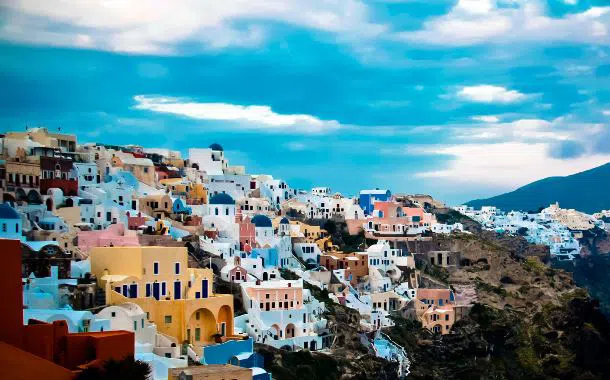
Santorini
Santorini is a small circular archipelago of volcanic islands located in the southern Aegean Sea, about 200 km southeast of mainland Greece.
Santorini is located in the southern part of the Cyclades.Its special geological configuration gives a spectacular, wild and unique beauty, becoming one of the main tourist destinations in Europe.
The current crescent shape of Santorini is a consequence of the enormous volcanic explosion that destroyed much of the island causing the formation of the caldera present on the territory, inside which form a series of wonderful small islands.
The island is a sanctuary of peace and calm, an idyllic corner where tourists from all over the world enjoy a few moments of pleasant relaxation. However, the quiet Santorini is, at the same time, one of the most suggestive and festive places in Greece. The square in the center of Fira and the beaches of Kamari, Perivolos and Perissa are the most lively and fashionable places.
The volcanic beaches of Santorini are not the best known in Greece, but they stand out for their diversity, their unique charm and the unique colors of the sand and stones. Santorini offers a spectacular view of the city, eclectic cuisine, enchanting art galleries, a very fun nightlife and excellent wines.
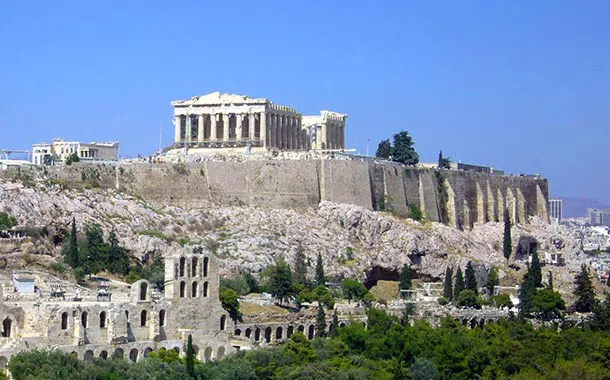
Athens
For many, Athens is a city lived two thousand five hundred years ago. Symbol is the mighty Acropolis which dominates almost every view and itinerary of every visitor, crowned by the iconic Parthenon, stands above the city, watching the sprawling modern metropolis in evolution.
Athens, the capital of Greece, is a city where antiquity and modernity, history and contemporary culture blend in a unique way. Everyone knows that the name of the city derives from the ancient Greek goddess of wisdom and justice. However, few people actually know the legend behind this event. According to myth, Athena and Poseidon, the God of the seas, vied for the right to name the city. Poseidon, to impress the inhabitants, gave them water, while Athena gave them an olive branch.
At first the choice fell on Poseidon, since the citizens considered water the most precious gift. When, once they tasted the water, they discovered that it was salty and not drinkable, they changed their minds and recognized Athena as their patron. One of the most famous historical sites in the city is the Acropolis, a majestic hill topped by ancient Doric temples, including the Parthenon, built in 477 BC. and the Erechtheion, built between 421 and 406 BC. Climbing the Acropolis, tourists can enjoy a breathtaking view of the city and the Aegean Sea. However, Athens is not only history, but also a lively cultural capital. In the Plaka district, located at the foot of the Acropolis, it is possible to stroll through the welcoming streets, visit the traditional Greek taverns and enjoy the authentic atmosphere.
Then there are the numerous cultural activities offered by the numerous museums, galleries and theaters present in the city. Athens is an important port for cruise ships that offer trips to the Mediterranean and beyond. Cruises from Athens allow guests to explore the rich cultural heritage of Greece, including the islands of Crete, Santorini and Mykonos, where you can admire the crystal clear waters of the Aegean Sea and a coast of white houses.
In addition to the Greek islands, cruises from Athens also offer the opportunity to visit other exciting Mediterranean destinations, including historic cities in Italy, Croatia and Turkey. Athens is therefore not only the historical and cultural center of Greece, but also an important starting point for cruises in the Mediterranean, which offers guests the opportunity to immerse themselves in the great history and splendid landscapes of this unique region.
Many still think of Athens as an ancient city that thrived two and a half thousand years ago. Its symbol is the mighty Acropolis, which dominates almost every view and the itinerary of every visitor, and it is crowned by the iconic Parthenon, which rises above the city, overlooking the sprawling and evolving modern metropolis.
Perhaps the most significant change is in the historical centre, which is almost unrecognisable since cars have been banned. This has liberated the area with the most significant archaeological sites, creating the longest, and undoubtedly one of the most splendid, pedestrianised zones in Europe. This huge archaeological park has brought past and present together, returning the cultural and social life of the city to the area around the ancient monuments and surrounding neighbourhoods.
Athens remains a city of contradictions; it is both frustrating and seductive. It is the oldest city in Europe, yet still in a state of transition. It is one of the safest and most vibrant European cities - an intoxicating mix of grunge and grace with an undeniably urban soul.
